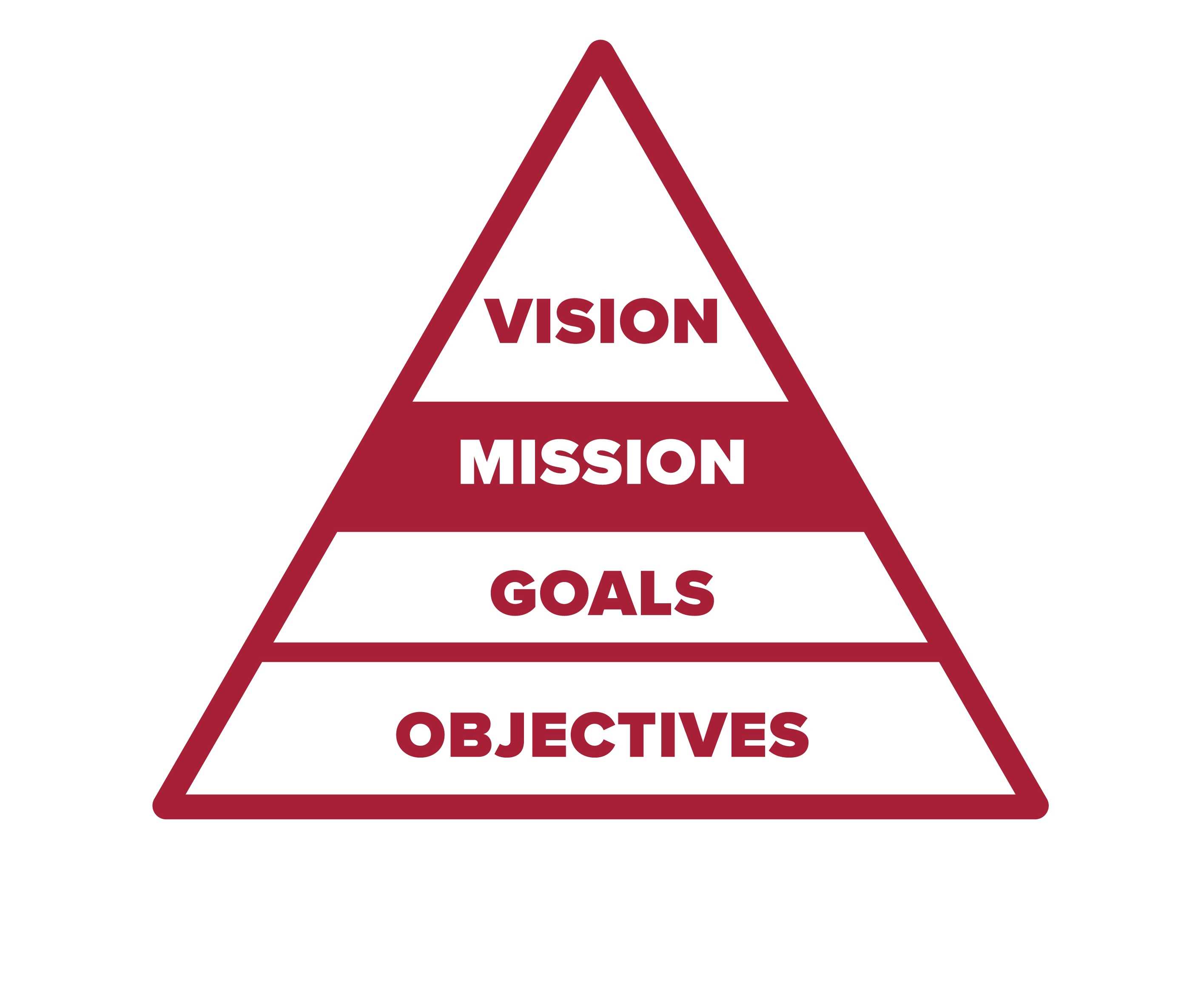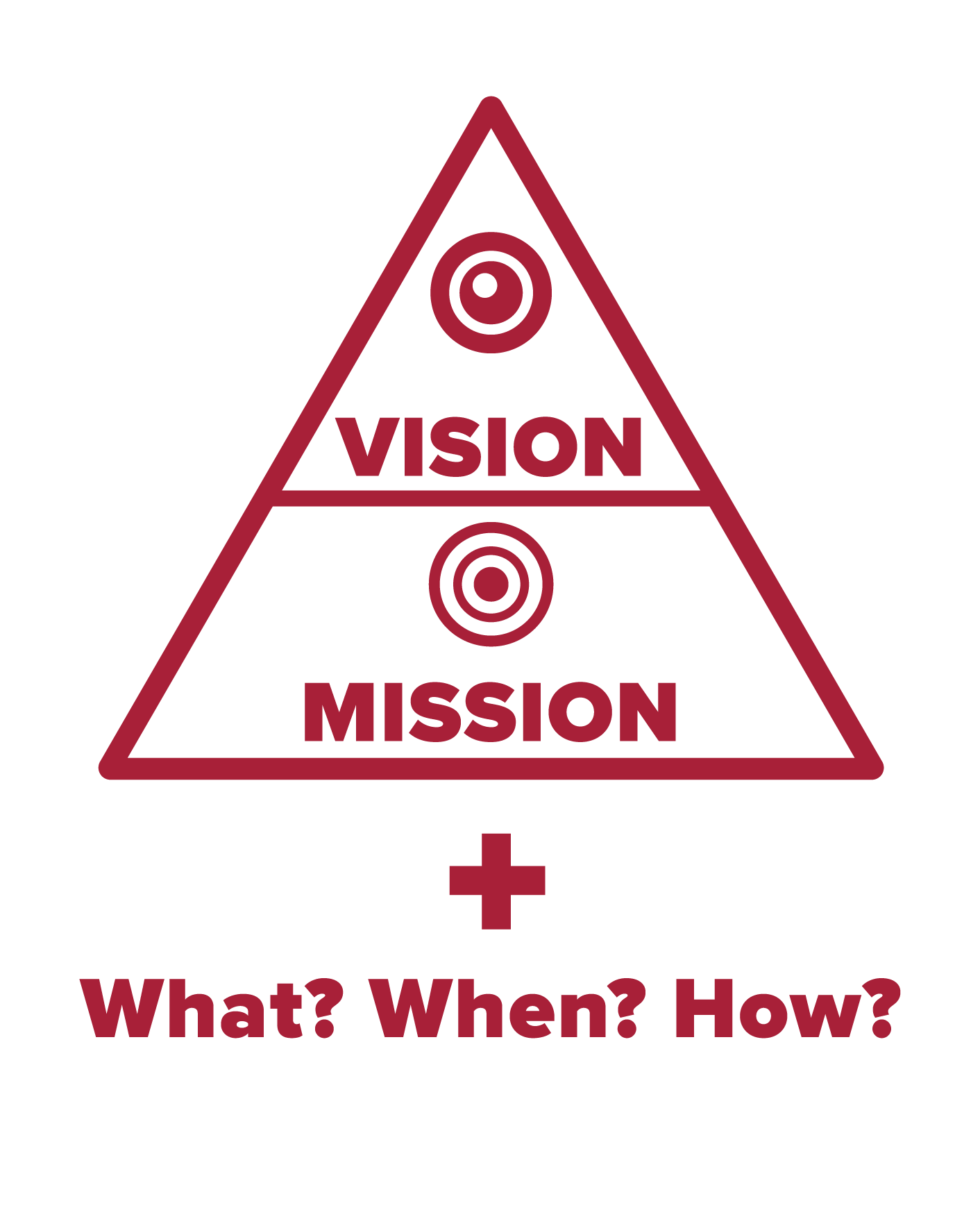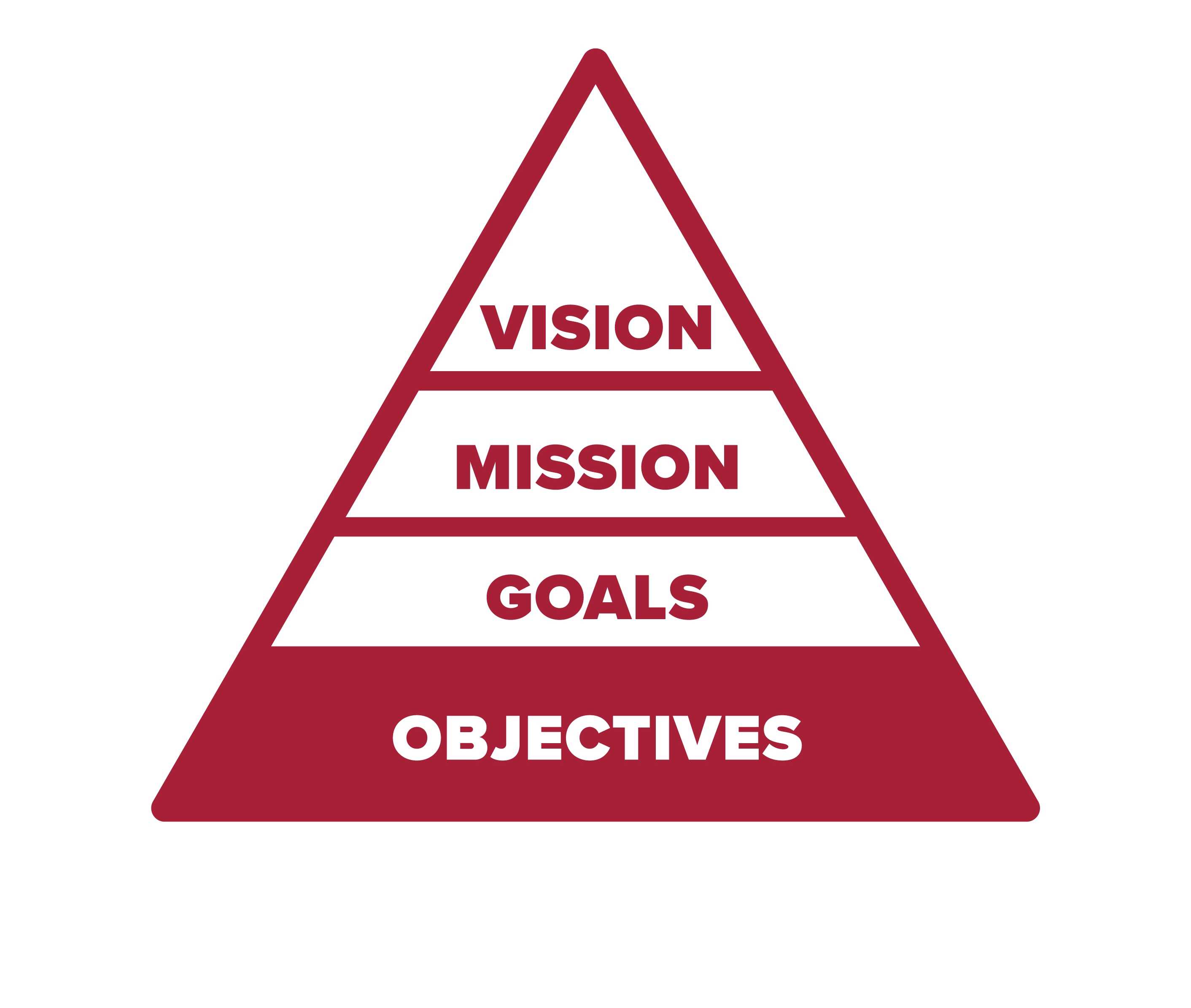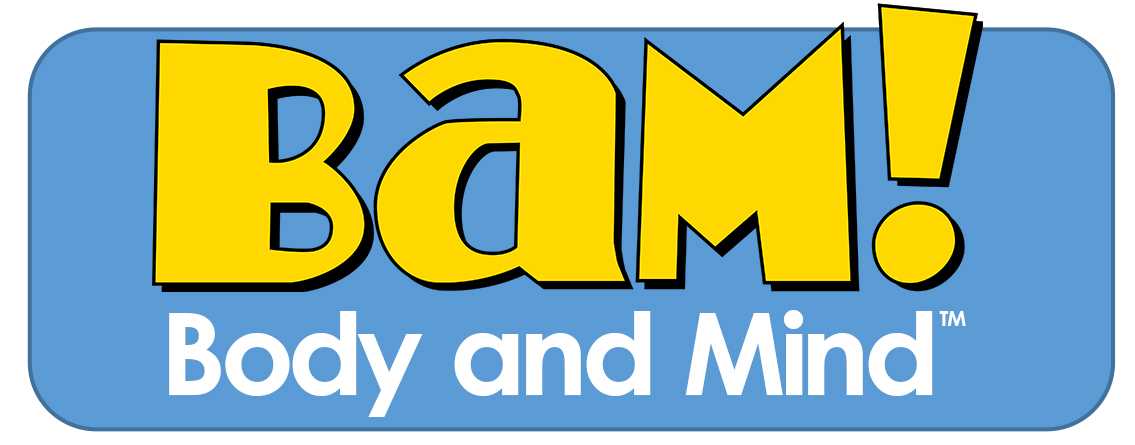Phase 1: Assessment
Building a cadre is an important step in advancing your capacity to provide training and technical assistance. Before you do so, however, it is also important to know the landscape your cadre will be working in. This could include the political, financial, or programmatic realities of the work you are doing. Taking time to understand the landscape before assembling your cadre will allow you to both assemble a group of people best suited to advance your objectives and to do so in a way that is most meaningful.
Once you understand the landscape, there are other considerations that may help you decide how to proceed with your cadre.
Define your Vision and Mission
Vision Statement

Define what you want your training cadre to accomplish through clear vision and mission statements.
A vision statement is an aspirational description of what you would like to achieve. It serves as a guide to choose current and future courses of action.
Your vision and mission statements will inform your decisions on forming the right cadre with the right focus.
Example Vision Statement
Mission Statement

Define what you want your training cadre to accomplish through clear vision and mission statements.
A mission statement is a declaration of your core purpose and focus. It explains how the organization will achieve the vision.
Your vision and mission statements will inform your decisions on forming the right cadre with the right focus.
Example Mission Statement
Assess the Strength of Your Infrastructure
Infrastructure
Needs Assessment
Is there a perceived gap in knowledge, skills, or attitude?
Gather data through a needs assessment to detect the needs.
Now that you have defined your vision and mission, determine your current strengths and weaknesses. You can do this by conducting a needs assessment, which will identify any gaps in your infrastructure.
An effective infrastructure involves
- A culture of continuous learning that includes formal and informal PD.
- A focus on specific, relevant content.
- Professional collaboration.
As you assess your infrastructure, key questions to answer might include
- What is the need?
- What is missing?
- How will you bridge the gap between what is and what should be?
Use the How Strong is Your Professional Development Infrastructure? [DOC – 44 KB] form to conduct an assessment.
Answering questions found in Most Important BUT Most Ignored Questions for Training Cadre Development [DOC – 41 KB] can add clarity to your cadre development efforts.
Develop an Evaluation Strategy
Evaluation Strategy

Next, it is important to determine a strategy for how you will ensure your training cadre has been successful. Thinking through your evaluation strategy early in the process ensures you begin with the end in mind. This will help guide your efforts and define exactly what success looks like for your cadre and organization.
At this stage in the process, you are only forming your evaluation strategy. You will perform the evaluation later.
A well-developed evaluation strategy will improve the effectiveness of your sustainability efforts. With a clear strategy in place, you will be able to determine the impact of your activities and fine-tune areas that need improvement to reach your goals.
Begin by determining your evaluation measures. Things to think about and plan for include
- What key indicators will you measure to determine the success of your cadre?
- When and how often will you measure your performance?
- How will you measure your performance?
Know What to Track
Develop a strategy that allows you to evaluate the impact of your training cadre:
- Are you reaching your intended audience?
- Do you need to make adjustments?
- Are adjustments putting you back on the right track?
- Are your resources being distributed wisely?
- Are you achieving the desired results?
Develop Goals and Objectives
Goals

Example Goal
Create a project plan to include professional development, technical assistance, and evaluation to engage district student health advisory councils in implementing comprehensive school physical activity programs.
You will need to establish the specific goals that your training cadre will be expected to accomplish within the framework of your vision and mission based on funding opportunities and other directives or priorities.
Ideally, this will include short-term and long-term goals. Short-term goals help guide your cadre’s focus and serve as milestones and progress checks along the way. Long-term goals specify what you ultimately wish to accomplish. Your training cadre’s goals will likely evolve as additional funding opportunities arise or other directives are given.
Well-written goals help to
- Establish the overall direction for and focus of your training cadre.
- Define the scope of what the cadre should achieve.
- Serve as the foundation for developing strategies and objectives.
There are two specific steps to writing good goals:
- Specify an expected outcome.
- Identify the target population to be affected.
Articulating your goals in this way can help you specify the objectives you want to accomplish.
Well-Written Goals
Well-written goals have these characteristics
- Declarative of a program outcome.
- Jargon-free.
- Short and concise.
- Understandable.
- Positive.
- Framed as objectives that serve as stepping stones for progress toward achieving goals.
Objectives

Example Objective
Collaborate with higher education and SHAPE America representatives to develop and deliver a student leadership conference for preservice health and fitness teachers by the end of the calendar year.
Objectives are statements that describe the intended result and are the basis for
- Monitoring progress toward achieving goals.
- Setting targets for accountability.
Objectives are only useful when they are SMART: Specific, Measurable, Achievable, Realistic, and Time-Phased.
SMART Objectives
What makes an objective SMART?
- Specific
- Specific objectives provide the who (target population) and what (action and activity) of activities.
- A specific objective uses only one action verb.
- Measurable
- Measurable objectives indicate how much change is expected.
- A measurable objective makes it possible to count or document change to determine whether the objective has been achieved.
- Achievable
- Achievable objectives can be accomplished with your program’s existing resources and constraints.
- An achievable objective is attainable within a given time frame.
- Realistic
- Realistic objectives address the scope of the problem and propose reasonable solutions.
- A realistic objective directly relates to the goal.
- Time-Phased
- Time-phased objectives provide a time frame indicating when an objective will be met.
- A time-phased objective indicates when the objective should be measured.
Identify Barriers and Solutions
Consider asking yourself and colleagues:
- What are barriers to establishing a mission and vision for the cadre?
- What are barriers to conducting a needs assessment?
- What are barriers to creating an evaluation plan?
- What can be done to overcome these barriers?
Resources for this Section
- Criteria to Assess Five-Year Goals [DOC – 45 KB]
- Data Collection Framework [DOC – 43 KB]
- Data Collection Methods: Pros and Cons [PDF – 70K]
- Examples of Clear and Unclear Goals [PDF – 89K]
- How Strong is Your Professional Development Infrastructure? [DOC – 44 KB]
- Improving Professional Development Offerings: Steps to Conduct a Needs Assessment [DOC – 51 KB]
- Most Important BUT Most Ignored Questions for Training Cadre Development [DOC – 41 KB]
- Sample Vision, Mission, and Goal Statements [PDF – 152K]
- Page last reviewed: September 14, 2016
- Page last updated: September 14, 2016
- Content source:



 ShareCompartir
ShareCompartir